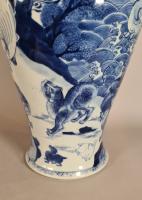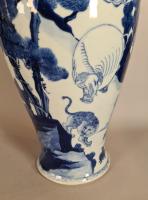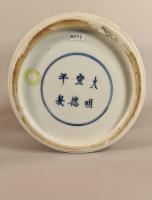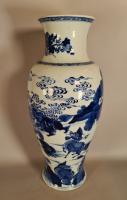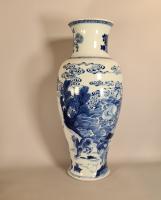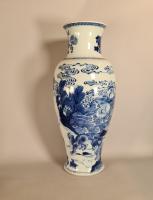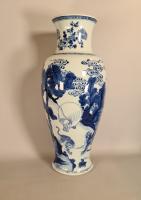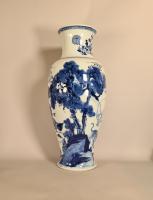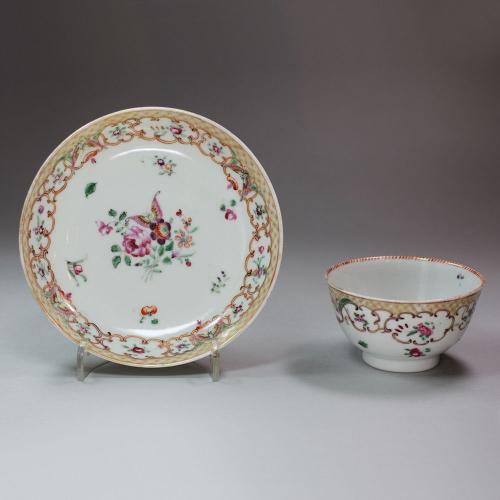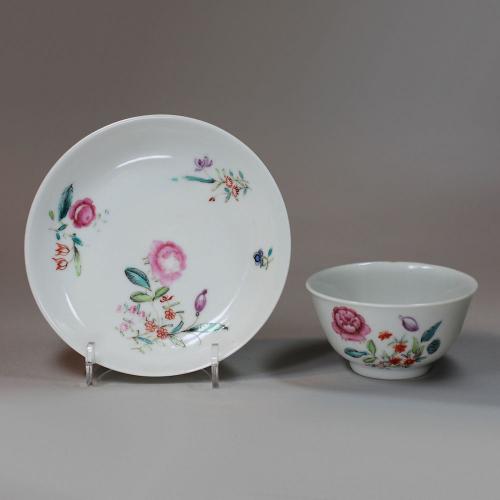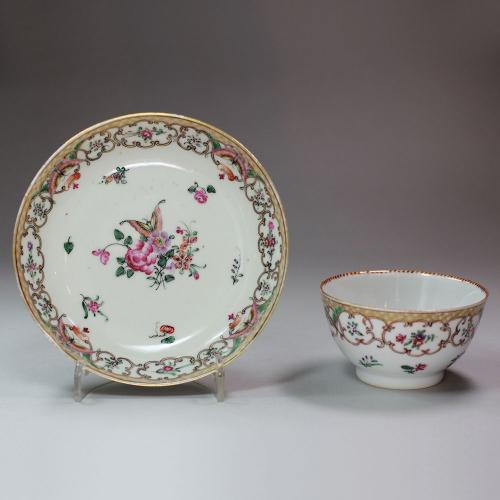
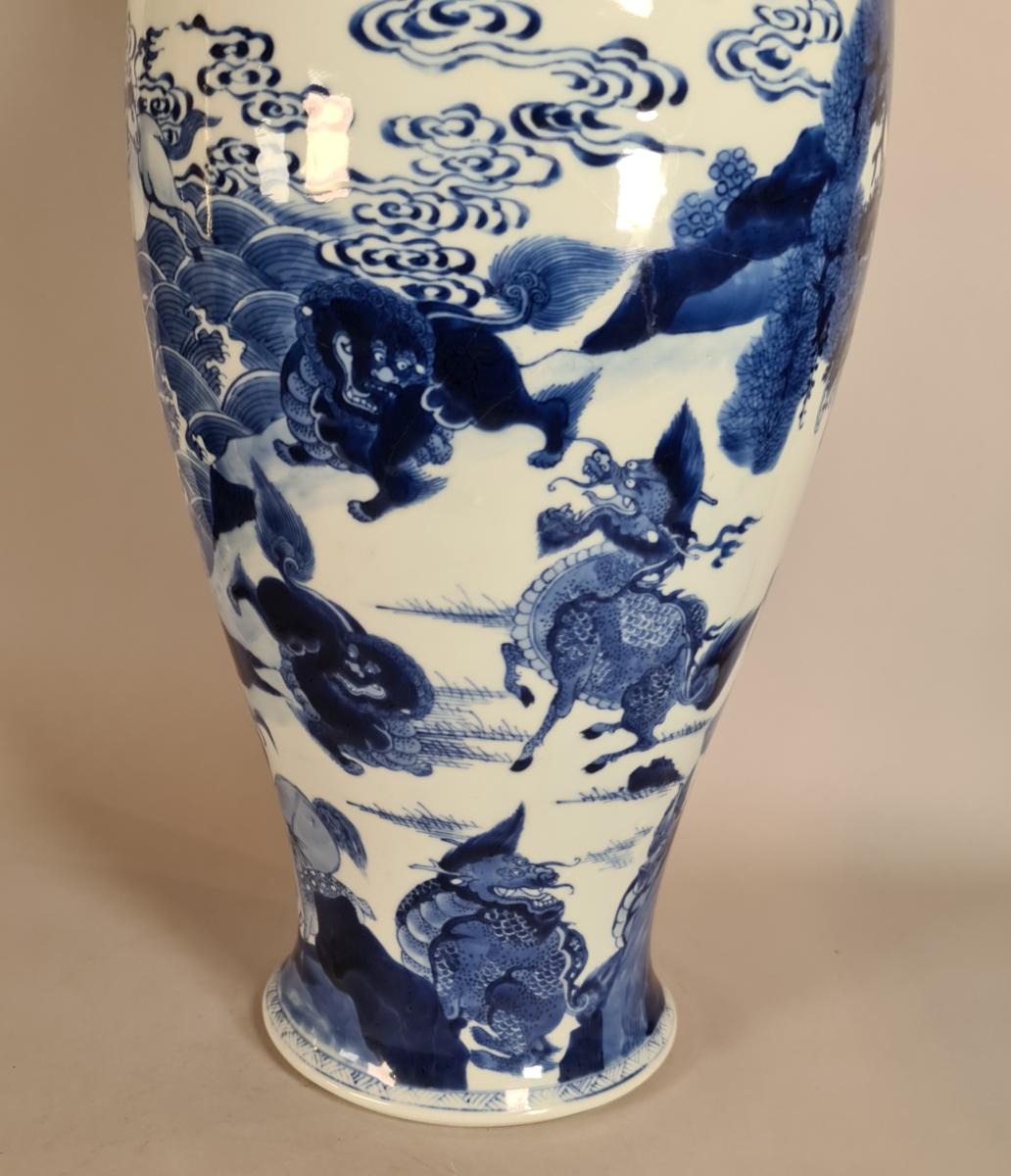
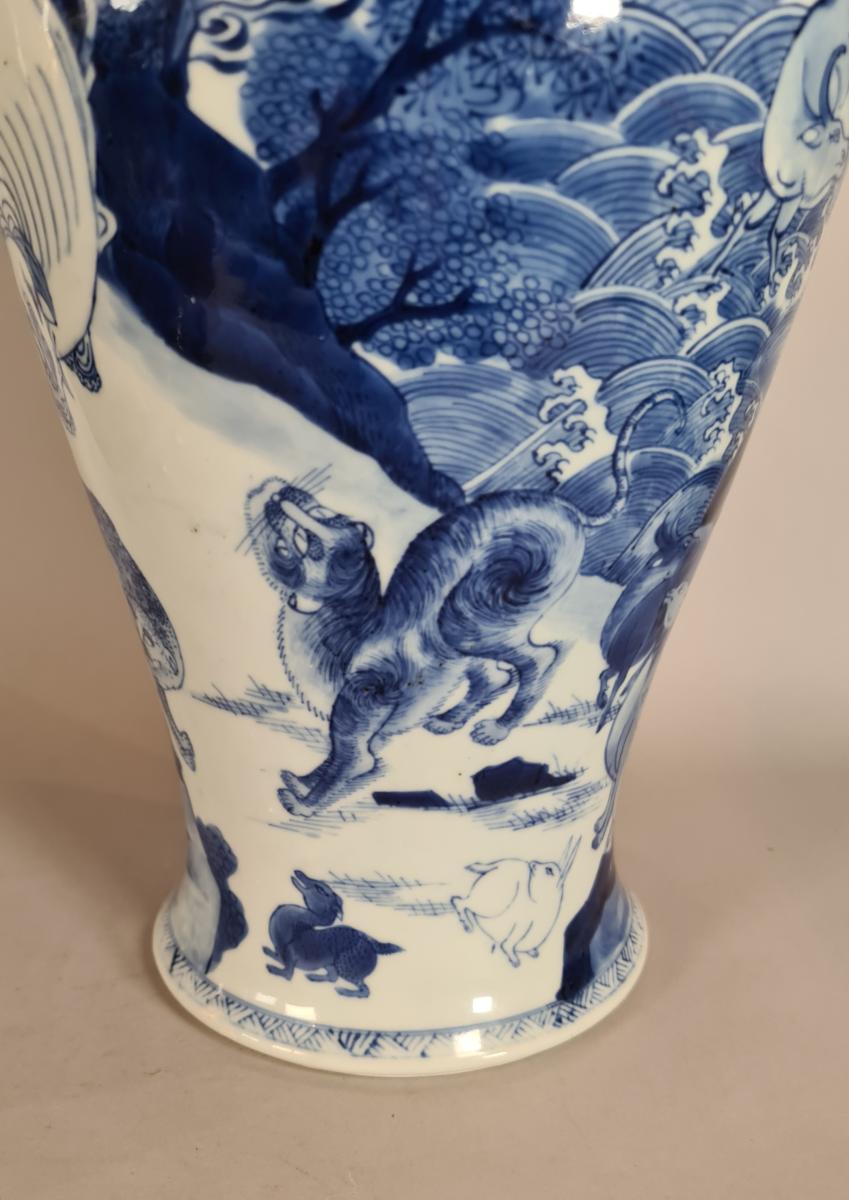
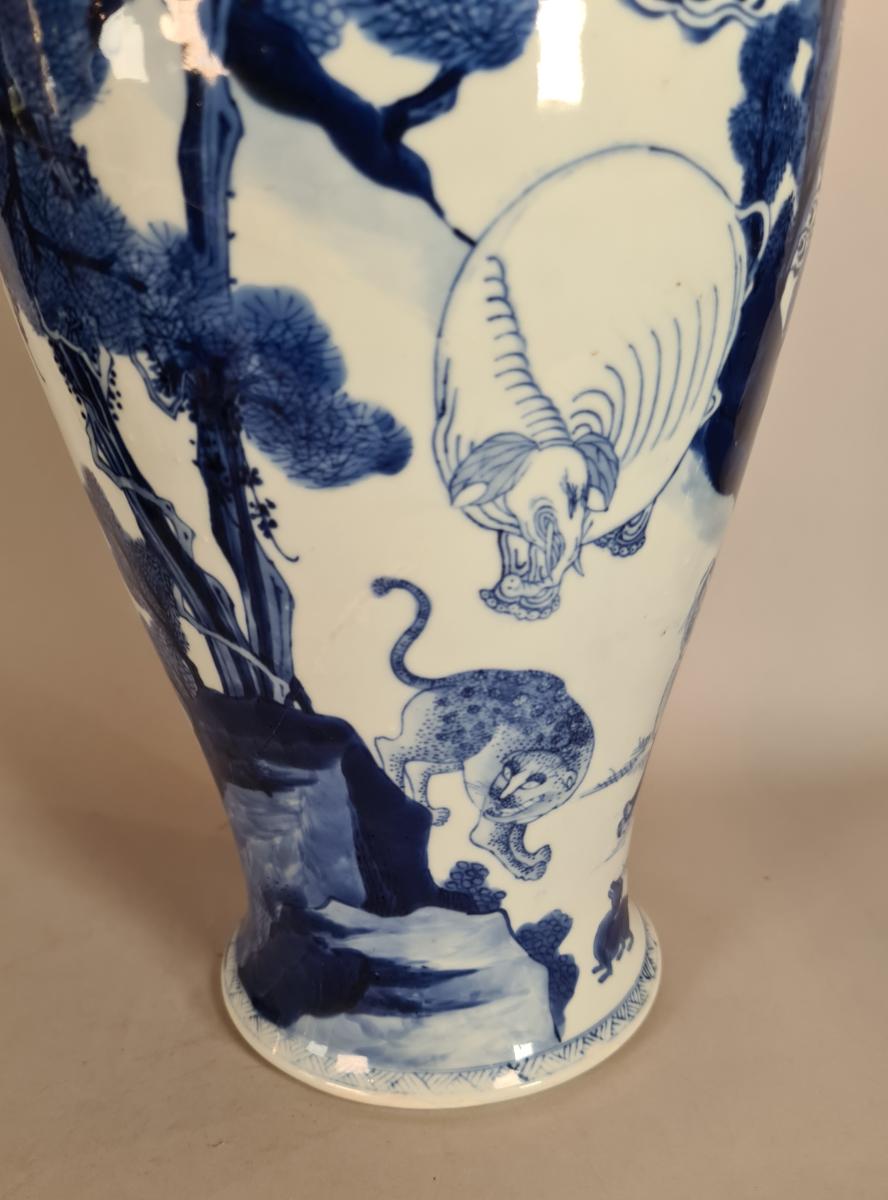

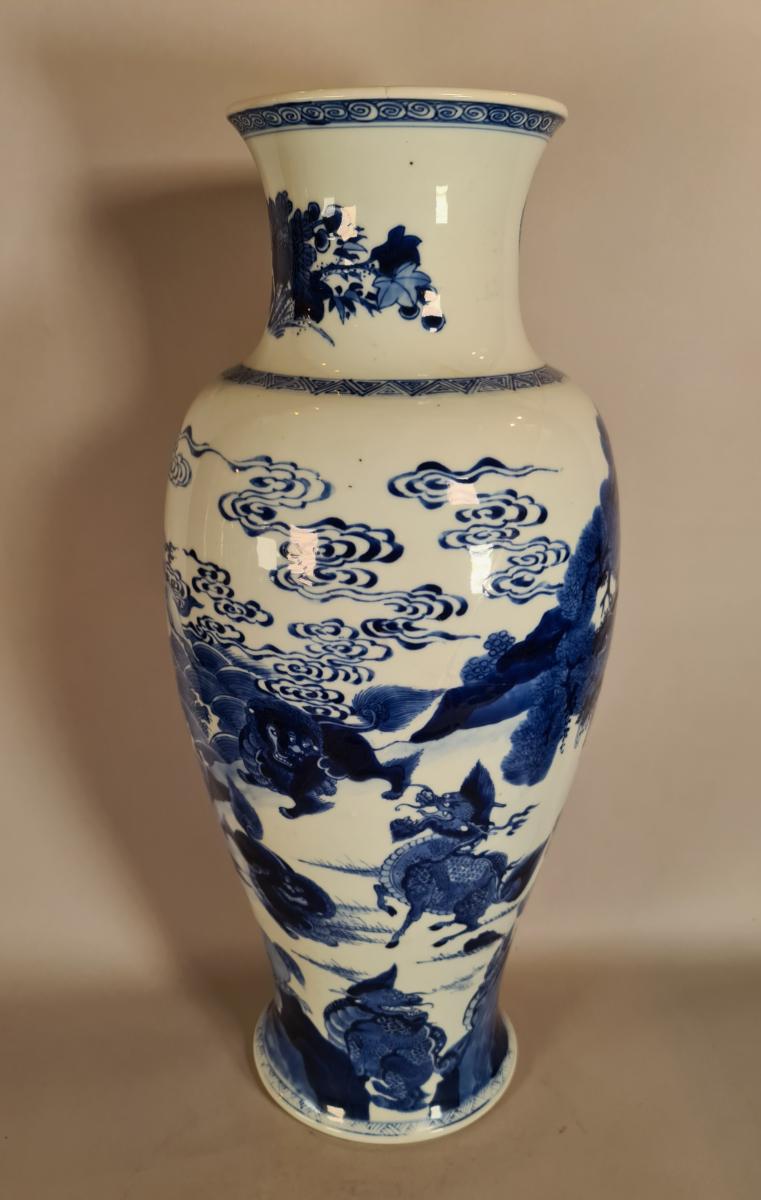
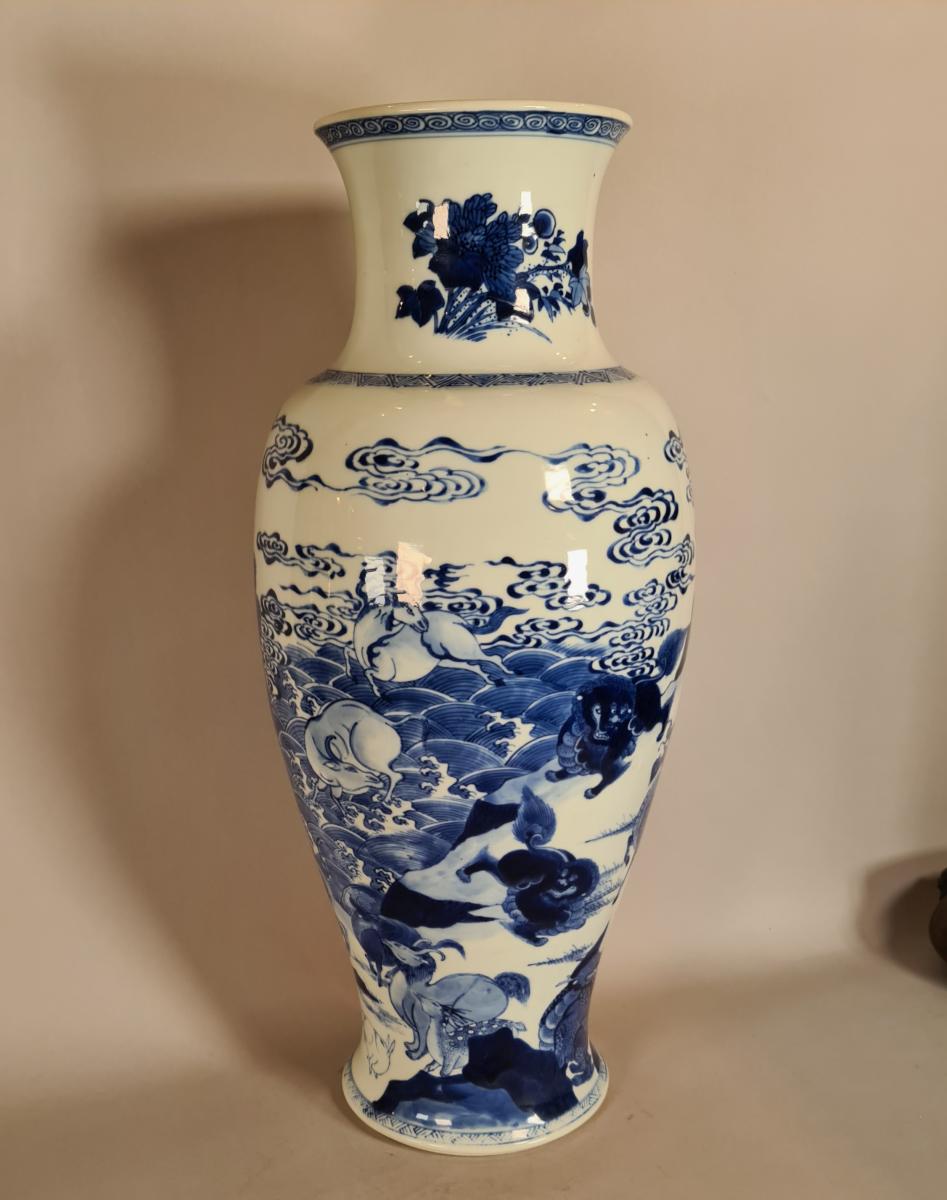
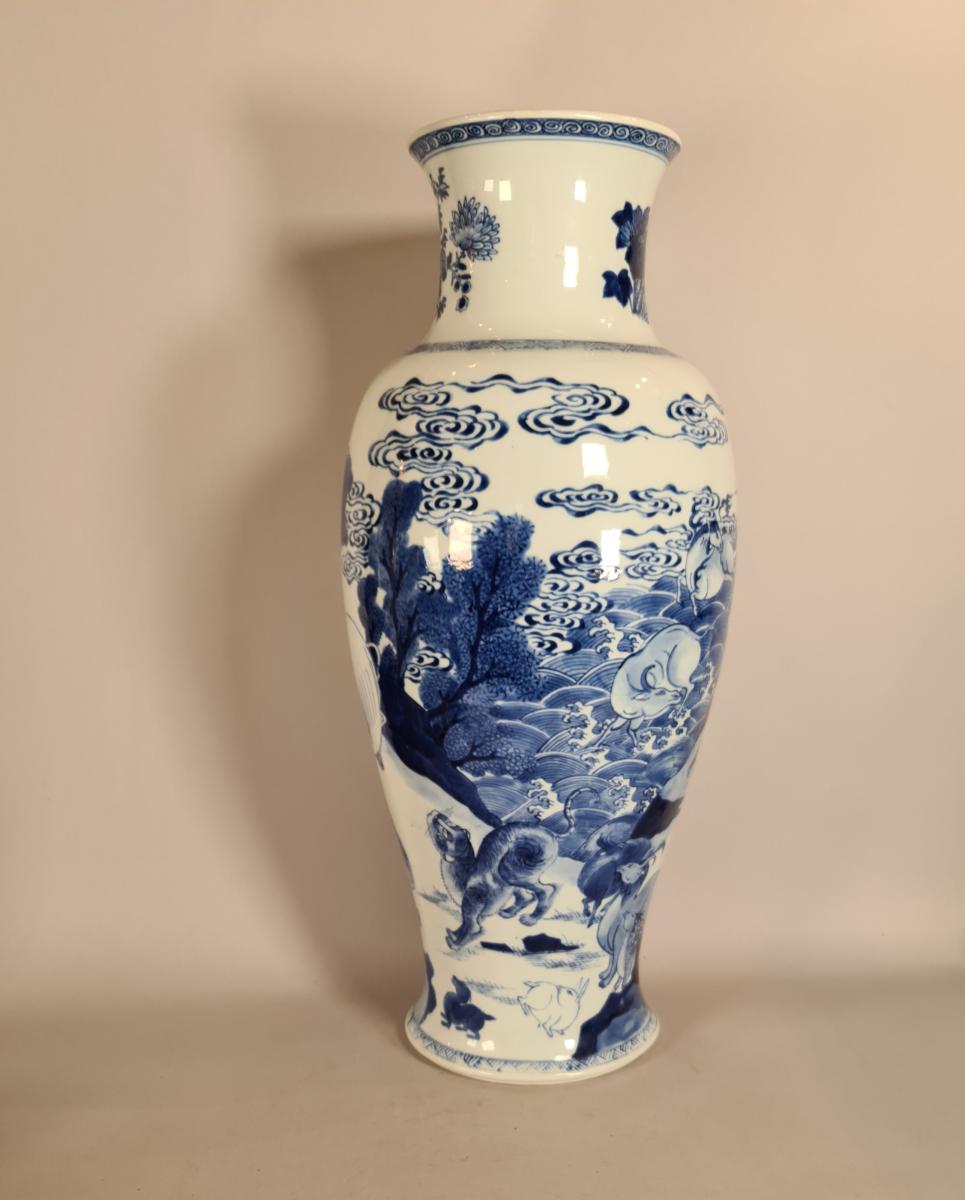
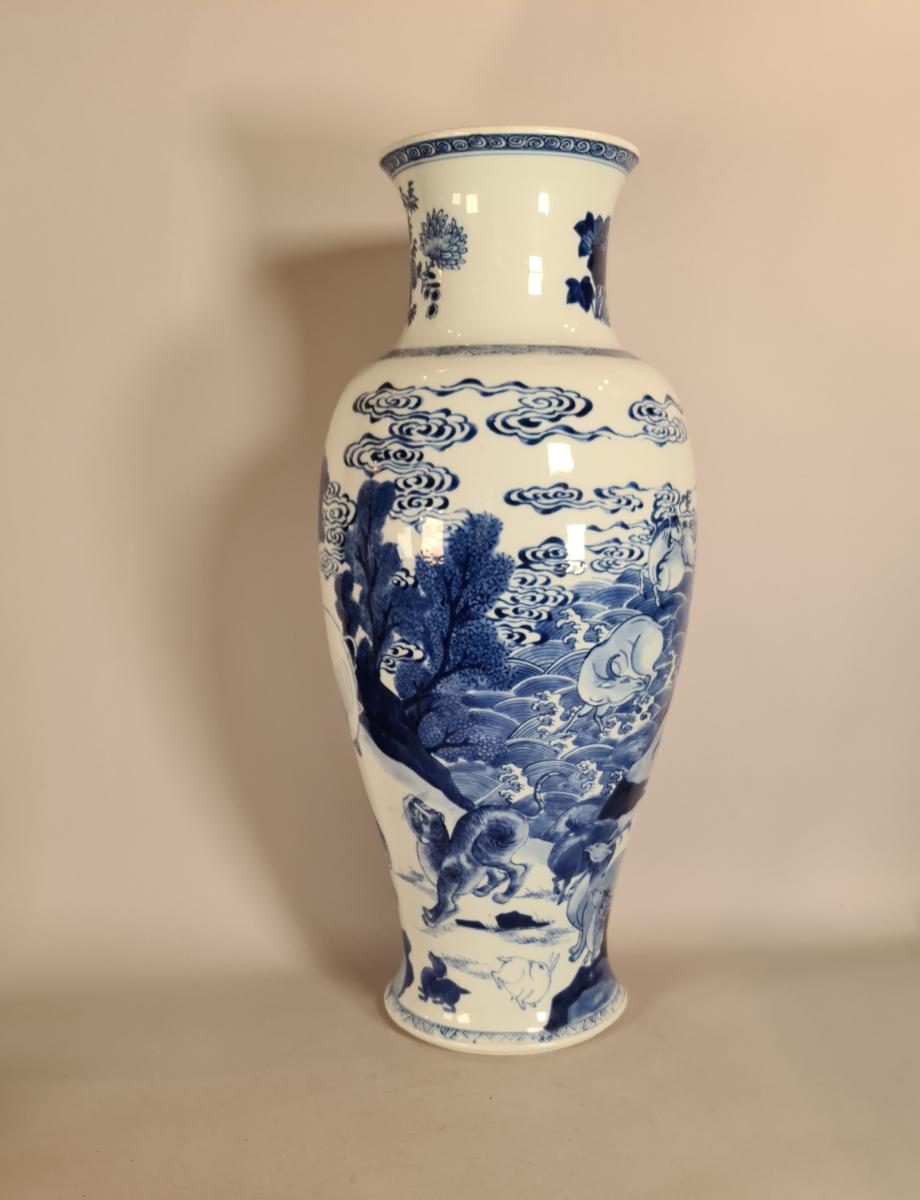

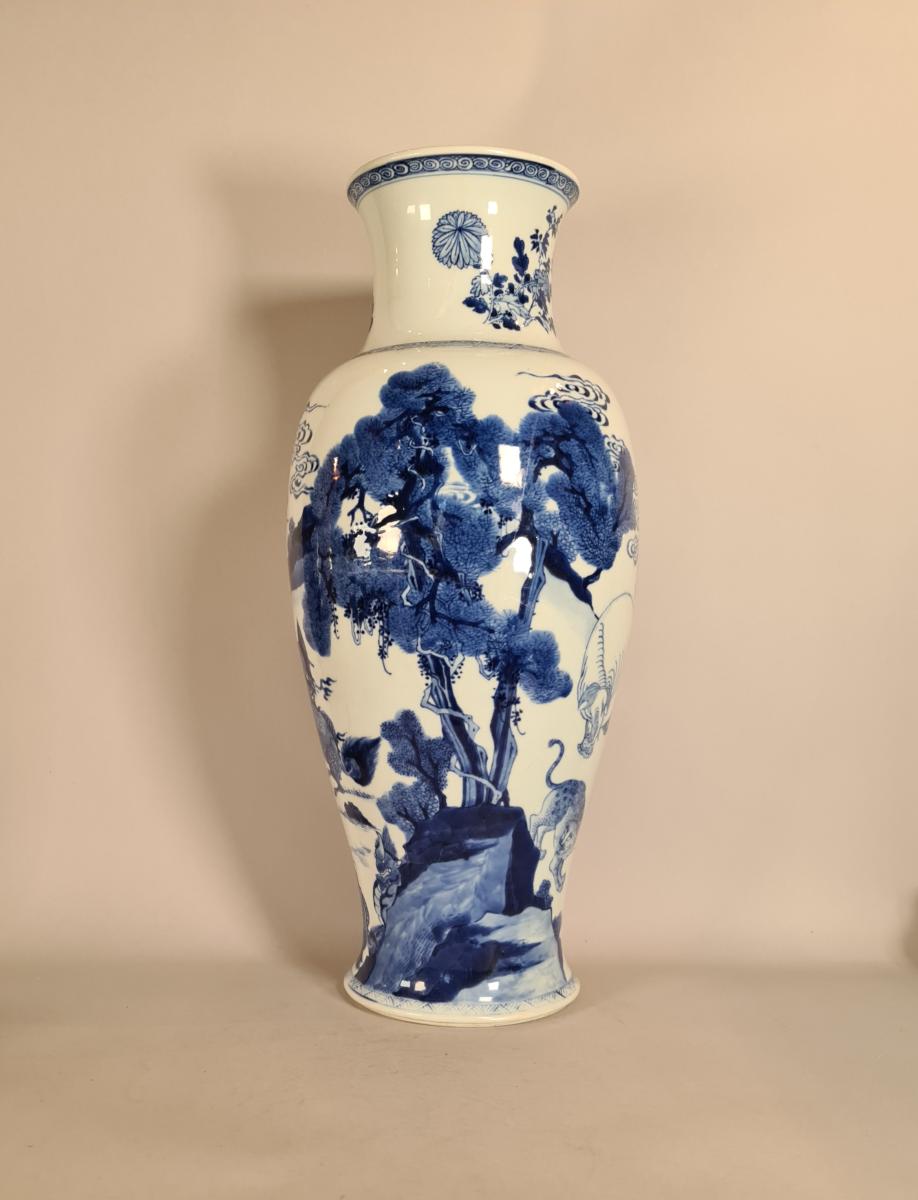
This object is eligible for a Certificate of BADA Provenance
The BADA Standard
- Since 1918, BADA has been the leading association for the antiques and fine art trade
- Members are elected for their knowledge, integrity and quality of stock
- Our clients are protected by BADA’s code of conduct
- Our dealers’ membership is reviewed and renewed annually
- Bada.org is a non-profit site: clients deal directly with members and they pay no hidden fees
Extraordinary Blue and White Mythical Creatures Vase with Xuande Mark, Kangxi (1662-1722)
带宣德款的青花神兽花瓶 An extraordinary rare blue and white mythical creatures vase with six-character Xuande mark, Kangxi (1662-1722), of elongated baluster form with flaring trumpet rim and spreading foot, with a smooth glaze and decorated in inky underglaze blue with a continuous landscape scene with a menagerie of animals and mythical beasts, including an elephant, qilin, tigers, Buddhist lions, deer, horses, a rabbit and a spotted leopard, all on a rocky shoreline with a large tree and hanging vines, rolling waves and swirling clouds overhead; all within narrow geometric bands to the shoulders and footrim; the neck with two clusters of chrysanthemum, peony and foliage and the flaring rim with a further narrow band of small scrolls; the base with a shallow footrim and six-character Xuande mark in underglaze blue within a double circle.
Dimensions:
Height: 48.2cm.
Condition:
Damaged and restored
Notes:
The various animals and beasts on this vase hold different symbolic meanings. For example, the qilin signifies good fortune, prosperity and longevity, while foo dogs (lions) are associated with protection from malignant spirits, and are typically depicted in stone at the entrance to temples and other sacred sites. Tigers and leopards both represent military strength and sagacity, while rabbits symbolise fertility and abundance. The elephant is a symbol commonly associated with Buddhism, as according to Buddhist teaching the Buddha’s mother, Queen Maya, dreamt of a white elephant before giving birth to Siddartha Gautama. They also symbolise strength (both physical and mental), wisdom and prudence, and are often used as symbols of good luck. Thus, the combination of mythical beasts and animals on this vase contribute to a highly auspicious design. The arrangement of different animals together in the landscape also carries symbolic meaning, as one of the central concerns of Daoism is the belief in an underlying universal order in the world, and the attainment of immortality through living in balance with living creatures and the cosmos. On this vase, animals with contrasting, or complementary associations are portrayed alongside each other in harmony. For example, the rabbit is strongly associated with the feminine, the horse with the masculine; Foo dogs, too, are often depicted in pairs to represent male and female; the tiger represents the earth and the west whereas the dragon (here represented by the qilin) with water and the east. The assortment of animals embody the relationship between yin and yang, and the natural balance of the universe sacred to Daoist belief. Vases of this form were often referred to as ‘Guanyin vases’, owing to the elegance of their elongated shape.
The famous collection of Chinese export porcelain amassed by Leo and Doris Hodroff was renowned as one of the greatest and finest of its kind, and was the subject of the 2005 volume ‘Made In China: Export Porcelain From The Leo And Doris Hodroff Collection At Winterthur’ written by Ronald W. Fuchs II and David Howard to accompany the exhibition of ceramics of the same name at the Winterthur Museum, Delaware. In addition to the collection given to the Winterthur, the Hodroffs also presented many ceramics to museums including the Peabody Essex Museum, the Minneapolis Institute of Art and the Norton Museum of Art. Several large sales of items from the collection took place between 2007 and 2009 at Christie’s New York; this vase was sold during ‘The Hodroff Collection, Part II’ in January 2008 (lot 230).
Provenance:
Acquired from Christie's New York, ‘The Hodroff Collection, Part II Chinese Export Porcelain from the Collection of Leo and Doris Hodroff’ 23 January 2008 (Lot 230).
Stock number
W767The BADA Standard
- Since 1918, BADA has been the leading association for the antiques and fine art trade
- Members are elected for their knowledge, integrity and quality of stock
- Our clients are protected by BADA’s code of conduct
- Our dealers’ membership is reviewed and renewed annually
- Bada.org is a non-profit site: clients deal directly with members and they pay no hidden fees



